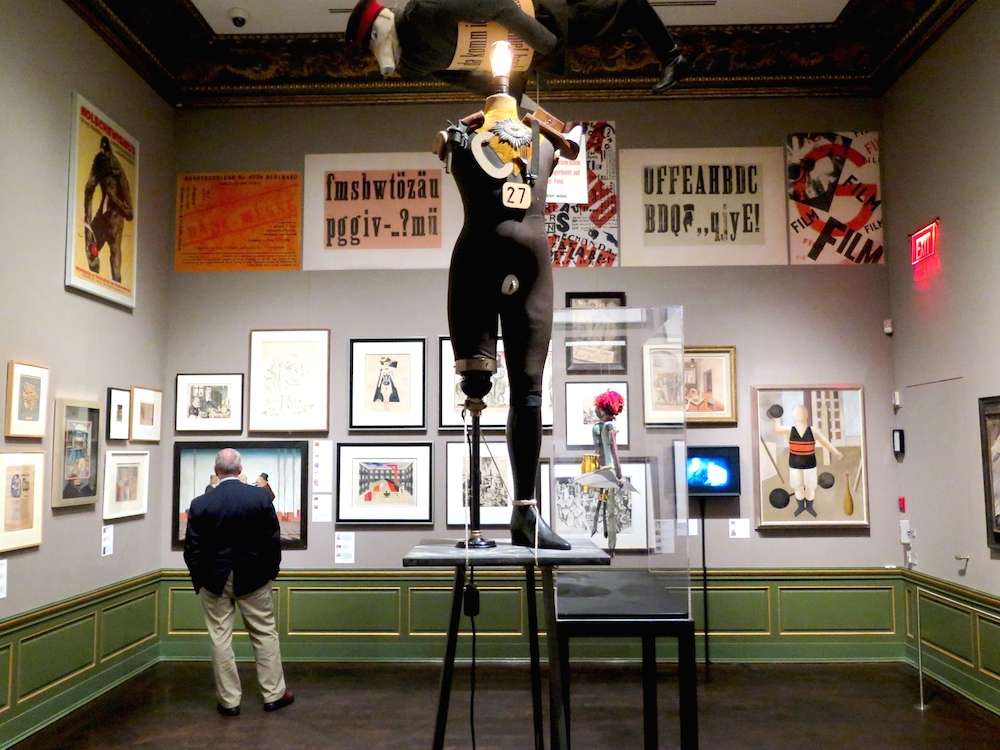 Between the years 1871 and 1919, the population of Berlin quadrupled as people from around the world found themselves drawn to the glittering, burgeoning metropolis in the heart of Europe. The political center of Germany, Berlin was also considered the crossroads of the modern age, a perception that inspired the works of numerous artists, film directors, critics and writers.
Between the years 1871 and 1919, the population of Berlin quadrupled as people from around the world found themselves drawn to the glittering, burgeoning metropolis in the heart of Europe. The political center of Germany, Berlin was also considered the crossroads of the modern age, a perception that inspired the works of numerous artists, film directors, critics and writers.
At New York’s Neue Galerie, “Berlin Metropolis: 1918-1933” chronicles the ongoing evolution of “the most ‘American’ city in Europe” with an exhibition that focuses on Berlin during the Weimar period. With more than 300 works on display, the multi-media show features painting, drawing, sculpture, collage, photography, architecture, film, and fashion. Major works by Max Beckmann, George Grosz, and Herbert Bayer are displayed alongside artifacts of mass culture such as posters, photographs, magazines, and advertisements.
Curated by Dr. Olaf Peters, the scholar and historian who curated “Degenerate Art: The Attack on Modern Art in Nazi Germany, 1937,” as well as the 2010 exhibition “Otto Dix,” “Berlin Metropolis” is organized by theme, with a focus on the modern woman, a new utopia, and a room entitled “Into the Abyss.” Throughout the exhibition, visitors study architectural renderings of unrealized projects by Mies van der Rohe and gaze upon movie posters and articles of clothing such as an embroidered coat in leather, satin and monkey fur – all with a foregone sense of the impending tragedy that lies ahead.
Though fragile, the Weimar democracy, nonetheless, gave rise to numerous aesthetic movements, including the Berlin Dadaists whose work dealt with the horrors of war. Visitors to the Neue Galerie will likely wander this stimulating exhibition torn between awe for the accomplishments of Weimar Berlin and the angst that accompanies the knowledge that this cosmopolitan metropolis would, ultimately, succumb to devastation and atrocity.
On view through January 4, 2016, “Berlin Metropolis” will be exhibited solely at Neue Galerie, a museum devoted to early 20th-century German and Austrian art and design. Conceived by art dealer Serge Sabarsky and collector Ronald S. Lauder, Neue Galerie opened in 2001 on Manhattan’s “Museum Mile” with the goal of showcasing Germanic culture for American audiences.
Prior to the exhibition’s opening to the public, visitBerlin hosted a media and press reception during which representatives spoke about Berlin’s ongoing evolution and upcoming events in 2016. Visitors to Berlin have more than 1,500 cultural events to choose from daily, including the brand-new Berlin Spy Museum, which opened in September 2015.
The ongoing renaissance of Berlin’s breweries, which have been repurposed as venues for food, drink, art, and culture, parallels the city’s fascination with food trucks and street food, marked by the continued popularity of Streetfood Thursday at Markthalle Neun. Equally inspiring is the reinvigoration of the city’s western center, marked by the opening of the Waldorf Astoria Berlin, the 25hours Hotel Bikini Berlin, and the reopening of the historic Zoo Palast theatre.
One of the world’s fastest-growing cities in the tourism business, Berlin continues to attract global visitors, many of whom utilize the Berlin WelcomeCard, which has become Europe’s most successful city pass.



























